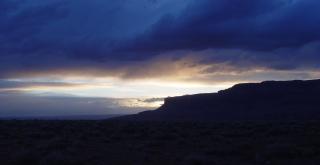-
Although
the stratigraphy is similar, slides at opposing ends of the Vermilion
Cliffs are noticeably different, indicating multiple factors actors
have likely played a role in their formation.
- Similar
slides occur throughout the southern Colorado Plateau.
-
Analysis using palynology may provide a better idea of when and
why the slides occurred.

REFERENCES
-
Ahnert,
Frank, (1960), “The Influence of Pleistocene Climate
Upon The Morphology of Cuesta Scarps On The Colorado Plateau”,
Annals of The Association of American Geographers, Vol. 50, No.
2, pp. 139-156.
- Baars,
Donald L., (1995), “Navajo Country: A Geology and Natural History
of the Four Corners Region“, 255 p.
- Fenton,
Cassandra R., Poreda Poreda, Robert J., Nash, Barbara P., Webb, Robert
H., and Cerling, Thure E., (2004), “Geochemical Discrimination
of Five Pleistocene Lava Discrimination of Five Pleistocene Lava-Dam
Outburst-Flood Deposits, Western Grand Canyon, Arizona”, The
Journal of Geology, Vol. 112, pp. 91-110.
- Hamblin,
W. Kenneth, (1994), “Late Cenezoic Cenezoic Lava Dams In The
Lava Dams In The Western Grand Canyon”, Geological Society of
America Memoir 183, 139 p.
- Reiche,
Parry, (1937), “The Toreva-block, a distinctive block, a distinctive
landslide type”, Journal of Geology, v. 45, no. 5, pp. 538-548.
- Strahler,
Arthur N., (1940), “Landslides of the Vermilion and Echo cliffs,
northern Arizona“, Journal of Geomorphology, Vol. 3, pp. 285-301.
|